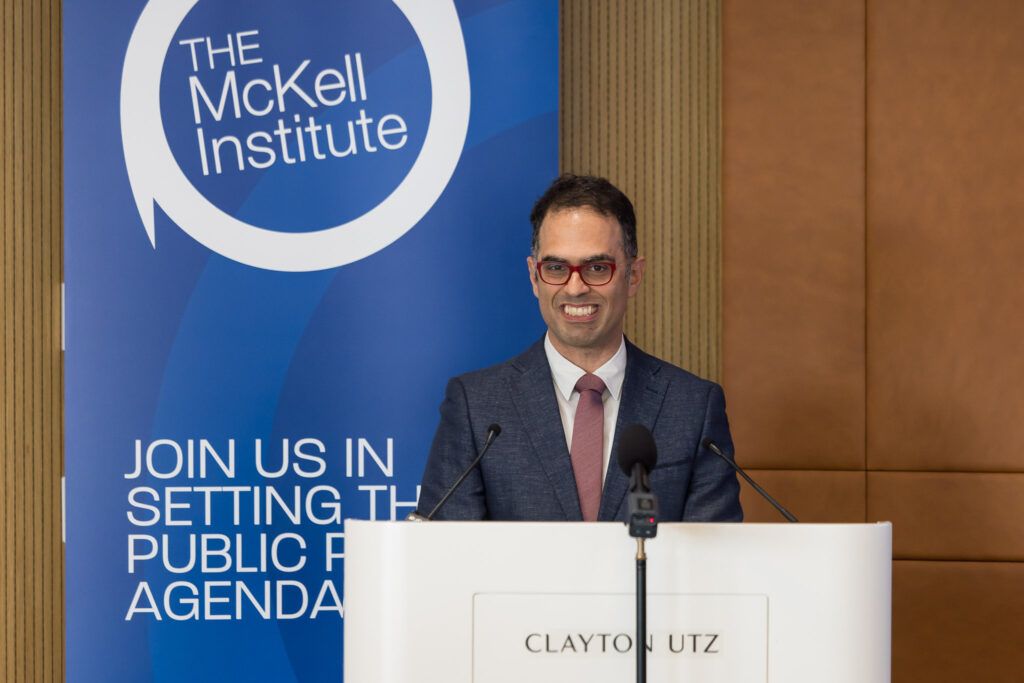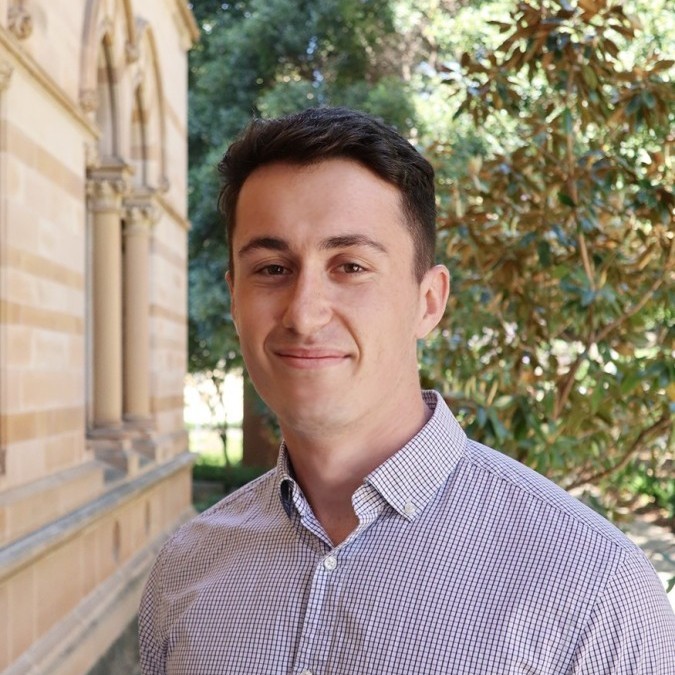A delicate fiscal & economic context
NSW Treasurer Daniel Mookhey today handed down the Minns Labor Government’s second budget.
In April, the Treasurer kicked off the budget campaign with a major address to the McKell Institute, at which he foreshadowed that this year’s budget would be one defined by tough choices and restraint, while recognising the genuine cost of living pressures NSW residents are facing, especially on housing. Ahead of the budget, a suite of challenges were facing the government:
- Credit rating and deficit: Deficits have been forecast into the foreseeable future, with $3.6 billion in 2024-25, $2.5 billion in 2025-26, $2.4 billion in 2026-27 and $1.5 billion in 2027-28, expected.
- Budget accounting issues: $1 billion mistake in double counting the proceeds of sale from the sale of buildings above train stations for the Sydney Metro; net debt would have been $118 billion for 2025-26 but accounting for the error increases it to $119 billion.
- GST allocation: Commonwealth Grants Commission reducing the NSW GST relative from 92 cents on the dollar in 2023-24 to 87 cents on the dollar for 2024-25, which the government claimed had cost it almost $12bn.
- Cost of living pressures, most notably on housing: While inflation has fallen from the December 2022 peak annualised rate of 7.8 per cent down to 3.6 per cent, it remains a persistent challenge for Treasurers.
- Wage pressure: After lifting the previous government’s public sector wage cap, public sector workers are chasing wage rises to catch up to living costs.

Treasurer Mookhey addressing the McKell Institute in April, 2024 to launch the NSW Budget campaign.
By the numbers
Given these pressures, today’s budget was always going to be a balancing act.
State net expenditure will continue to increase moderately year-on-year, rising from $116.5 billion in 2022-23 to $129.1 billion in 2027-28. NSW’s ambitious capital works program will continue, with an average expected outlay of $29.9 billion per year between 2024-25 and 2027-28 – over double the average spend only one decade ago.
Budget deficits are forecast to decrease over the forward estimates from $10.6 billion in 2022-23 to only $1.5 billion in 2027-28. Yet despite the forecast gradual decreases in deficits over the forward estimates, state net debt is set to increase significantly over the next five years from $74.9 billion in 2022-23 to $139.5 billion in 2027-28 – an increase of over 86 per cent. Over this time interest payments are expected to double from $4.2 billion in 2022-23 to $8.6 billion in 2027-28.
Housing at the heart of this budget
As Budget Paper 1 makes crystal clear: ‘At a time of the greatest housing crisis in a generation, this investment can’t wait’.
On social housing, the Budget committed $5.1 billion in capital expenditure to build social dwellings in 2024-25, including over 6.200 new homes and 2,200 replacement homes. The Budget further commits $1 billion towards critical maintenance on 33,500 existing social dwellings across NSW, ensuring that NSW’s existing dwelling stock is fully utilised and preserved for generations to come. Given that NSW's capital expenditure on social housing has sat between $400 million and $700 million per year for the last five years, this $5.1 billion injection represents a watershed investment in NSW's social housing future.
Recognising that social housing is just one (important) part of navigating the housing crisis, the Budget also ensures that the private market is well placed to absorb the heightened demand. It allocates an additional $555 million to speed up the state’s planning system, with $200 million allocated to specifically incentivise councils to meet their housing targets. Under the ‘Building Homes for NSW’ package, it sets an ambitious target of unlocking an additional 21,000 market and affordable homes to complement the generational social housing uplift.
A broader package also includes new policies for key worker housing, both in the city and regionally.
Tackling the cost of living challenge
The Budget also delivers $8.7 billion in targeted cost-of-living relief to households most in need by:
- Bulk billing support: introduction of the Bulk-Billing Support Initiative to protect the cost of seeing a GP, at a total cost of $188.8 million over four years
- Toll road relief: the $60 weekly toll cap that began on 1 January 2024 will continue, with an investment of $561.0 million over two years
- Energy subsidies: The expanded energy social program, includes a $100.0 million increase in 2024-25, will support up to 1 million NSW households with energy bill relief, bringing the total program to $435.4 million in 2024-25. This is in addition to the Australian Government’s $300 energy bill relief payment
- Stamp duty exemptions: concession and exemptions on property duty will continue to support more people to get their first home through the First Home Buyer Assistance Scheme
- Fee relief: up to $4,220 per year in fee relief is available to parents and carers of children aged 3-5 years attending eligible preschool programs, with an estimated 200,000 enrolments eligible for fee relief in 2024.
- A 'Cost of Living' Adjustment: Valued at $1000 for eligible recipients.
Other key announcements
In addition to the new spend on housing, the government locked in existing commitments to health, major transport initiatives, and new infrastructure for education.
Its offered a further $2bn for the Parramatta Light Rail; another $1.5bn for maintenance of education facilities; and a suite of investments into hospitals and mental health services.
What we're celebrating
The government's social housing investment is a major breakthrough. McKell has been active in making the case for such an investment. In our pre-budget submission co-authored with Vinnies NSW, we argued for a multibillion dollar 'surge' investment, comparable to what has been announced today.
I’m in today’s @dailytelegraph with @VinniesNSW CEO Yolanda Saiz explaining the importance of social housing in NSW.
Only 4 % of homes in NSW are social housing, and many of them aren’t up to scratch.
We need a surge spend in social housing to get back on track pic.twitter.com/AAO2gFxQ7N
— Ed Cavanough (@edwardcavanough) March 25, 2024
The commitment to improving wages of frontline workers is also critical, both improving the daily lives of public sector workers that keep NSW running, but also working to address to attrition rates in many frontline jobs.
Our analysis
Treasurer Mookhey has delivered his second budget amid a period of economic uncertainty, sustained inflation, cost of living pressure, and significant fiscal challenges for the state.
The Treasurer pre-empted many of the most difficult decisions in the weeks leading up to the budget, so the news around net debt and the risk to the state's credit rating were expected. The forecast revenue increases, however, may have given the Treasurer more room to breath than initially expected, allowing for the continuation and expansion of some cost of living relief measures.
Despite the fiscal headwinds, the budget demonstrates that the NSW Government remains committed to tackling disadvantage, injecting new funds into the health system, delivering meaningful wage rises for frontline key workers, maintaining commitments to transport and public infrastructure delivery, and most crucially, genuinely addressing the most significant policy challenge facing the state: housing.
The government's housing strategy is by no means timid. Though critics point to relatively static approval and completion numbers on new builds and rising rents, the government has been piecing together a comprehensive housing policy architecture that will make a meaningful difference in the medium term. Pre-budget announcements such as the emphasis on key-worker housing in regional areas complement its Transit Oriented Development reforms, as well as its reforms to the rental market.
But today's announcement of a major new allocation of funding into the ailing public and community housing sector was the missing piece of the housing puzzle. It is good policy, yes. But it also signals the government's values, and a marked step change in the funding and focus on social housing in the state.
Want to know more about this year's budget? Get in touch — mckell@mckellinstitute.org.au




SOCIAL SHARE